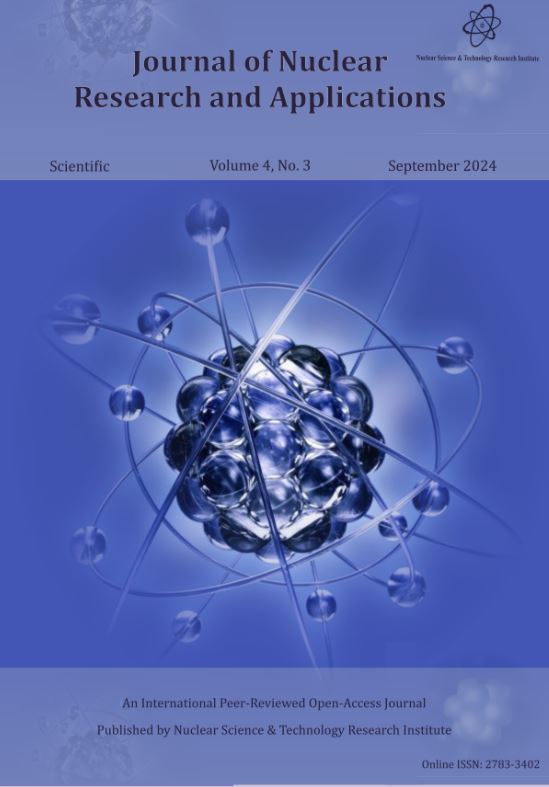Document Type : Technical Paper
Authors
1 Department of Physics, Payame Noor University, P.O. Box 19395-3697, Tehran, Iran
2 Reactor and Nuclear Safety Research School, Nuclear Science & Technology Research Institute, P.O. Box: 14395-836, Tehran, Iran
Abstract
An important parameter of Geiger Muller detectors is their lengthy dead time which causes a nonlinear response at high counting rates of the detector. Dead time depends on the detector’s nature (size, geometry and material) and its connected electronics (detection, counting, and quenching circuits) plus detection settings. A very important and efficient method of dead time cancelation is time to first count method of measurement at the expense of a complicated electronic circuitry for active quenching of the Geiger Muller detector. In this paper, based on FPGA, a fast and efficient active quenching circuit is developed. Moreover, the time to first count (named as time intervals in this paper) is also acquired at the same time by the system on a chip (SoC) architecture. The time resolution of the system is 10 ns which is pretty enough for Geiger Muller detectors regarding their timing characteristics (the dead time of the Geiger Muller detectors ranges from several microseconds to more than 200 microseconds). ZP1210 Geiger Muller detector is taken as a case study. The dead time of the detector is about 200 µs according to the manufacturer datasheet. This active quenching circuit which is implemented on a single chip, is experimentally tested on this detector. Details of the work is explained in the text.
Keywords
- Knoll G Radiation Detection and Measurement.Third and Fourth ed. New Jersey: John Wiley; 2000-2010.
- Leibnitz H A New Quenching Circuit for Geiger Counters.AIP. 1948; 19: 500-502.
- Usman S,Patil Radiation Detector Dead Time and Pile Up: A Review of the Status of Science.NET. 2018; 50: 1006-1016.
- Meric I, Johansen GA, Holstad MB, Calderon
AF, Gardner RP. Enhancement of the Intrinsic Gamma-ray Stopping Efficiency of Geiger-Müller Counters. NIM-A. 2012; 696: 46-54.
- Lee SH, Gardner A New G±M Counter Dead Time Model. App. Rad. Iso. 2000; 53: 731-737.
- Usman S, Almutairi B, AkyurekA New Phenomenological Model for Geiger-Müller Dead Time, Trans. ANS. 2017; 117: 496-498.
- Crowell AD, low Improved Quenching Circuit for Geiger Counter. AIP. 1958; 29: 245-246.
- Matthews A Two-Transistor Geiger-Muller Counter Quench Circuit. AIP. 1969; 40: 1511-1512.
- Barclay Improved Response of Geiger-Muller Detectors.Nucl. IEEE. 1986; 33: 613-616.
- Vagle O, Olsen Ø, Johansen A Simple and Efficient Active Quenching Circuit for Geiger-Muller Counters, Nucl. Instrum. Methods Phys. Res. 2007; A58: 358–361.
- Remon Build Very Simple Design and Cost Effective Geiger-Muller Counter. Res. J. Appl. Sci. 2018; 31: 1-10.
- Brovchenko VG, Kirichenko AM, Tsygankov A Circuit for External Quenching of the Discharge in the Geiger-Muller Counter. Instrum. Exp. Tech. 2002; 45: 175–177.
- Advantages of FPGA and Disadvantages of FPGA. RF Wireless World. 2012;Available from:https://www.rfwireless-world.com/Terminology/Advantages-and-
- Kuon I, Tessier R, Rose FPGA Architecture: Survey and Challenges. NOW. 2007;2: 135-253.
- Geiger Selection Guide. Available from: https://www.measureworks.co.jp/Geiger-Selection-Guide.pdf.
- Johansen GA, Vagle O, Olsen Ø, Holstad MB, Meric Geiger-Muller Detectors for Gamma Ray Tomography. Electricity. 2009; 114:136-139.
- Akyurek T, Yousaf M, Liu X, Usman GM Counter Dead Time Dependence on the Applied Voltage, Operating Temperature, and Fatigue. Radiat. Meas. 2015; 73: 26-35.
- Chu PP. FPGA Prototyping by VHDL Examples. New Jersey:John Wiley;

